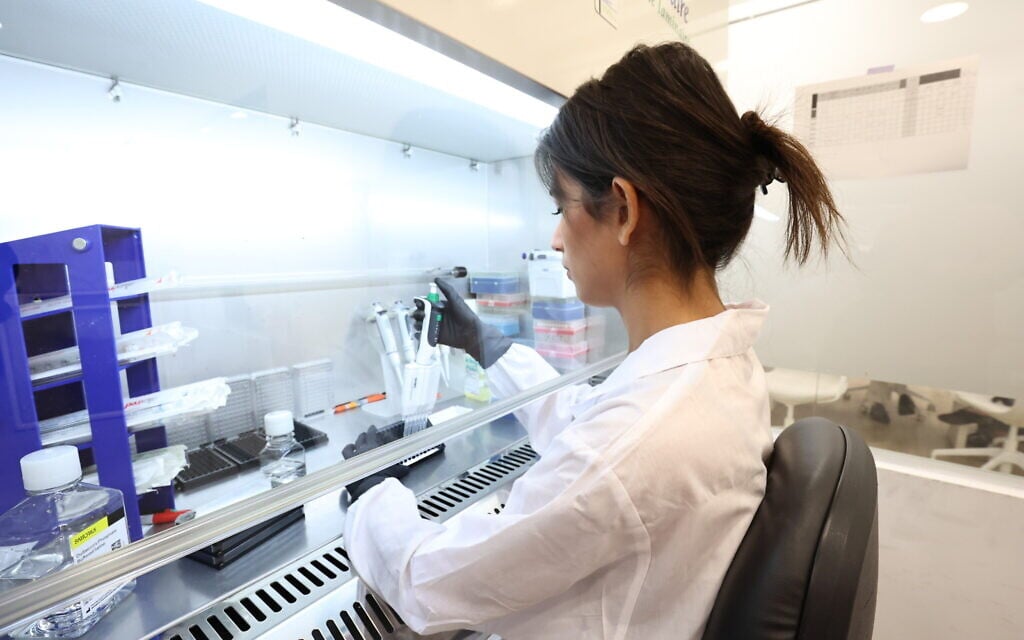With trauma compounding and resources stretched, could the Israel-Iran conflict accelerate the adoption of digital and AI-driven mental health care in Israel?
As Israel grapples with the psychological strain of compounded conflict, first following the October 7 Hamas attacks, and more recently with the confrontation against Iran in the wake of Operation Rising Lion, mental health resources are being stretched to their limits. Even amid the newly announced ceasefire, which is meant to offer a halt to hostilities for now, the emotional aftermath across the nation is far from resolved.
Systemic challenges like clinician shortages, access disparities, and a lingering stigma around traditional therapy stand in contrast to a growing, urgent national need for support. According to McKinsey, the total burden from mental health conditions in 2025 is estimated at 183 million disability-adjusted life years (DALYs). At the same time, “emerging therapeutic options such as digital therapies are gaining recognition for their accessibility and effectiveness, particularly in low-resource settings.”
Indeed, global online behavior reflects growing openness to and traction for such digital therapies. As highlighted by Harvard Business Review, therapy has become the leading use case for generative AI in 2025.
In Israel, a multitude of platforms are already operating in this space. These include AI-based services such as Kai.ai, physiological approaches from Calmigo, passive sensing technologies by Behavidence, and the digitally scaled trauma response of NATAL, Israel’s Trauma and Resiliency Centre.
While the current situation unfolds against the uncertainty of a ceasefire and atop over a year and a half of sustained conflict, it raises the question of whether this juncture will mark an inflection point for tech-enabled mental health care in Israel, and whether these tools will gain the trust, investment and institutional support to play a more central role.
Cracks in the system reveal a growing need for alternatives
In recent years, Israel’s mental health system has faced mounting pressure, with the current situation exposing the full extent of its strain.
“Since October 7, we have seen an increase of 300% in people consuming psychiatric drugs in Israel,” said Adi Wallach, CEO and Co-Founder of Calmigo. “And the estimation right now is that there are 3 million people who are suffering from trauma.”
Organizations like NATAL, founded in 1998, have had to rapidly expand in response to escalating demand. In the earliest hours of October 7, it was the only helpline broadcast on Israeli television. It has also been instrumental in developing new, condensed treatment protocols adopted by both the Ministry of Health and the Ministry of Defence.
“Before October 7, NATAL had about 100 therapists,” said Ifat Morad, Director of International Relations, Partnerships and Resource Development. “Now we have more than 600 therapists all over Israel.” In tandem, the organization has launched a new app, expanded services via WhatsApp and Zoom, and integrated an AI bot to triage helpline calls. “We had about 400 people getting therapy one on one on a weekly basis. Now we have more than 3,000 on a weekly basis and counting,” she continued.
Mental health crises in Israel are often marked by waves of people turning to NATAL’s services. Speaking to the present national climate, Morad observed: “we are now in what we call rolling trauma. The trauma didn’t just finish. It’s rolling as we speak. We’re in it, all of us.”

Startups step in with tech-driven mental health solutions
While traditional mental health services in Israel have worked to leverage digitisation to expand their reach, several startups are aiming to address the growing mental health crisis with tech-first or hybrid solutions.
Kai.ai, a hybrid mental health platform combining human clinicians with conversation-based AI, has reached over 200,000 people in need. Initially launched in English, the service expanded to Ukrainian and Russian during the Ukraine war, and to Hebrew following October 7. In partnership with the humanitarian organization The Joint, Kai began offering free support to reservists, students, and civilians – a move it has continued amid the Israel-Iran conflict, now providing a full month of subsidized support to anyone impacted. The offer remains in place, notwithstanding the ceasefire.
For CEO Alex Frenkel, the AI component is central to the platform’s mission “because the AI is accessible 24/7.”
Calmigo, meanwhile, takes a physiological approach, offering a handheld device that activates the parasympathetic nervous system to deliver both immediate relief and long-term support. “You can think about the device as a remote control to your nervous system,” explained Wallach, who noted that Calmigo is one of the only non-medicated solutions providing fast-acting relief alongside sustained therapeutic benefits. “It’s as easy to use and as effective as a pill, but does not require a prescriber, and at a fraction of the cost as well.” Following October 7, the company donated 1,300 units to hostage families, soldiers, and traumatised children.
Behavidence was founded to bridge the gap in early diagnostics and intervention. “We detect mental health disorders or dynamics based on how you use your phone,” said Co-Founder Roy Cohen. “Just by passively sensing your patterns of behaviour.”
The passive approach, he explained, is key to long-term user retention. “We chose passive sensing because whenever we ask the user to do something, the chances of them staying with us a week later is gone.”
In the wake of October 7, the company also made its product freely available to support those affected. It is now working with HMOs and the Ministry of Defense to monitor PTSD symptoms in reservists.
For Cohen, the fundamental inefficiency in how care is delivered is a costly blind spot: “Treating early is cheap. But now the systems are designed to treat only when the symptoms are severe.”











